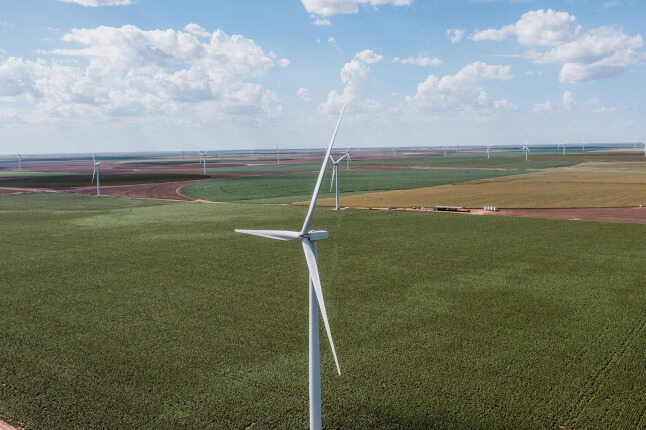News
The historic 2020 hurricane season, with its record-breaking 30 tropical storms and hurricanes, left in its wake hundreds of deaths in the United States, tens of billions of dollars in damages, and one important question: Is this what the future will look like?
While most climate scientists agree that hurricane severity, at least in terms of rainfall, will likely increase as the planet warms, there remains uncertainty about the future frequency of hurricanes. Today’s climate models offer a range of possible futures, some predicting an increase in North Atlantic hurricane frequency, others a decrease. These conflicting results beg the question: are these models even capable of predicting hurricane frequency or are they missing some vital process?
“In order to understand whether these models are credible we need to see if they can reproduce the past,” said Peter Huybers, Professor of Earth and Planetary Sciences and of Environmental Science and Engineering at the Harvard John A. Paulson School of Engineering and Applied Sciences (SEAS). “Today’s models do a good job simulating the past 40 years of hurricanes but as we move back in time, the models and data increasingly diverge. This raises an important question: if models do not reproduce the long-term history of hurricanes, should we trust their long-term predictions?”
If models do not reproduce the long-term history of hurricanes, should we trust their long-term predictions?

In a new paper published in Science Advances, Huybers and a team of researchers found that these models are, in fact, capable of reproducing the long-term history of hurricanes — but only if historic sea surface temperatures are corrected. The research highlights the importance of understanding sea surface temperatures patterns and suggests that a better understanding of these patterns could reconcile conflicting model predictions and improve our understanding of how climate change will impact future hurricane frequency.
This paper builds off previous research in which Huybers and his team identified bias in historic sea surface temperature measurements and developed a comprehensive approach to correct the data. That paper, published in 2019, led to a better understanding of how oceans warmed over time. Here, the researchers apply the same correction to help model historic hurricane frequency.
Until the 1960s, most sea surface temperature measurements were taken using a bucket to collect seawater and measuring its temperature with a handheld thermometer. The National Oceanic and Atmospheric Administration (NOAA) and the National Science Foundation’s National Center for Atmospheric Research (NCAR) maintains a collection of more than 155 million sea surface temperature readings dating back to the early 19th century from fishing, merchant, research and navy ships. These measurements form the basis for historical reconstructions of surface temperature over two thirds of the planet, but the data is biased based on how the measurements were taken and how the data was stored over time.
In 2019, Huybers, Chan and their colleagues developed a comprehensive approach to correcting the data, using a new statistical technique that compares measurements taken by nearby ships. Using this method, the team was able to solve a long-standing mystery in climate science: Why did the Atlantic warm more than twice as fast as the Pacific in the early 20th century?
In a recent paper, published in the Journal of Climate, the researchers applied the same approach to solve another mystery: Why was there a large spike in sea surface temperatures during World War II (1941—1945). Some had suggested that this spike was a result of increased industrial activity during the war. However, this reasoning doesn’t explain why the temperature decreased immediately following the war, given the decade and century-long lifetime of greenhouse gases. Huybers and Chan found that the temperature spike was the result of a change in sea surface temperature collection methods during the war.
Unsurprisingly, most sea surface temperature data from the late 1930s to mid 1940s comes from naval ships. Smaller naval ships still used the bucket method to record temperatures, but larger ship relied on engine room intake measurements. Huybers and Chan found that US and UK naval measurements can be more than half of a degree Celsius warmer than bucket measurements because the ambient temperature of the engine room increased the temperature of water by a few tenths of a degree.
The ships that used the bucket method also show a warm wartime spike but for a different reason. Sea surface temperatures are taken at least twice a day — once during the day and once at night. Chan and Huybers noticed that nighttime sea surface temperatures during the war were warmer than before and after. Why? Torpedos.
During the war, ships couldn’t have lights on deck at night in order to avoid being spotted by enemy submarines or warships and planes. Sailors took buckets inside to read and record the temperature. The simple change from measuring in the cool night air to measuring inboard led to an artificial increase in temperature.
“Changes in collection practices during the war created the artificial appearance of warmer temperatures during World War II,” said Chan.
Accounting for those changes flattened out the bump in temperature during the war, revealing a steadier rate of warming.
Sea surface temperature plays a critical role in the formation of hurricanes.
“The frequency of Atlantic hurricanes depends on the pattern of sea surface temperatures, particularly the warmth of the subtropical North Atlantic, an area that roughly extends from the tip of Florida to Cape Verde, relative to the tropical oceans as a whole,” said Duo Chan, a former graduate student at SEAS and first author of the paper.
When the subtropical North Atlantic is relatively warm, it leads to more atmospheric convection and more Atlantic hurricanes. When the subtropical North Atlantic is relatively cool, hurricane formation rates decrease, in part because of winds that shear apart proto-storm systems.
When today’s climate models try to reproduce past hurricane seasons, they generally predict too few between 1885-1900 and too many between 1930-1960. These models, however, all rely upon historic sea surface temperatures that indicate a relative cool subtropical Atlantic at the turn of the 20th century and a warm Atlantic in the mid-20th century.
But, as Huybers and Chan demonstrated in previous research, those historic sea surface temperatures contain systematic errors. Their corrected sea surface temperatures show a warmer subtropical North Atlantic from 1885 to 1920 and a relatively cooler one between 1930 and 1960. These adjustments bring hurricane frequency in line with observations.
“Our corrections to sea surface temperature patterns were independently developed, and significantly improve the skill with which models reproduce historical hurricane variations,” said Huybers. “These results increase our confidence both in historical sea surface temperatures and our models and provide a more-firm basis from which to explore how climate change will influence hurricane frequency going forward.”
The research was co-authored by Gabriel A. Vecchi and Wenchang Yang of Princeton University, and was partly supported by the Harvard Global Institute.
Topics: Climate
Cutting-edge science delivered direct to your inbox.
Join the Harvard SEAS mailing list.
Scientist Profiles
Peter John Huybers
Professor of Earth and Planetary Sciences and of Environmental Science and Engineering
Press Contact
Leah Burrows | 617-496-1351 | lburrows@seas.harvard.edu



